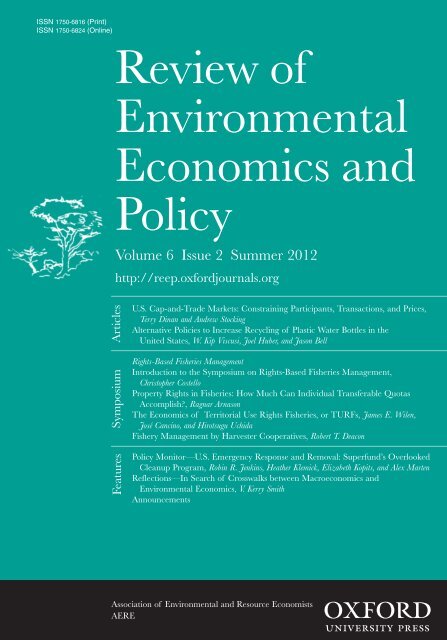回顾性成本分析综述
IF 6.6
3区 经济学
Q1 ECONOMICS
引用次数: 0
摘要
本文回顾了来自28项同行评议研究的证据,这些研究涉及13项美国环境保护署法规的实现成本。我们围绕合规成本的以下四个组成部分进行审查:被监管实体采用的合规策略、许可或其他价格、单位合规成本和总成本。对于每个成本组成部分,我们系统地评估了数据类型、数据覆盖范围、观察单位、获得结果的方法以及对混杂因素的控制。然后,我们确定哪些因素导致了事前和事后成本估算之间的差异。最常见的因素是事先不准确地计算基线条件和对技术革新考虑不足。我们发现,没有考虑到行为因素也会导致估计之间的差异。为了改进未来的事前成本分析,我们建议更好地描述基线条件,对高度不确定参数进行敏感性分析,更多地依赖经济模型来纳入行为反应并反映企业决策,以及更明确地考虑短期实施挑战。为了提高进行事后分析的能力,我们建议制定收集数据的计划,并在采用法规时确定兴趣点和分析方法。本文章由计算机程序翻译,如有差异,请以英文原文为准。
A Review of Retrospective Cost Analyses
This article reviews evidence from 28 peer-reviewed studies of the realized costs of 13 US Environmental Protection Agency regulations. We organize the review around the following four components of compliance cost: compliance strategies adopted by regulated entities, permit or other prices, unit compliance cost, and aggregate cost. For each cost component, we systematically assess data type, data coverage, unit of observation, method of obtaining the result, and controls for confounding factors. We then identify which factors drive differences between ex ante and ex post cost estimates. The most commonly identified factors are inaccurate ex ante accounting of baseline conditions and inadequate consideration of technological innovation. We find that failure to account for behavioral factors also contributes to differences between estimates. To improve future ex ante cost analyses, we recommend better characterization of baseline conditions, sensitivity analysis of highly uncertain parameters, greater reliance on economic models to incorporate behavioral response and reflect firm decision-making, and more explicit consideration of short-run implementation challenges. To enhance the ability to conduct ex post analyses, we recommend developing plans to collect data and to identify end points of interest and methods of analysis at the time the regulation is adopted.
求助全文
通过发布文献求助,成功后即可免费获取论文全文。
去求助
来源期刊
CiteScore
10.80
自引率
0.00%
发文量
25
期刊介绍:
The Review of Environmental Economics and Policy fills the gap between traditional academic journals and the general interest press by providing a widely accessible yet scholarly source for the latest thinking on environmental economics and related policy. The Review publishes symposia, articles, and regular features that contribute to one or more of the following goals: •to identify and synthesize lessons learned from recent and ongoing environmental economics research; •to provide economic analysis of environmental policy issues; •to promote the sharing of ideas and perspectives among the various sub-fields of environmental economics;

 求助内容:
求助内容: 应助结果提醒方式:
应助结果提醒方式:


